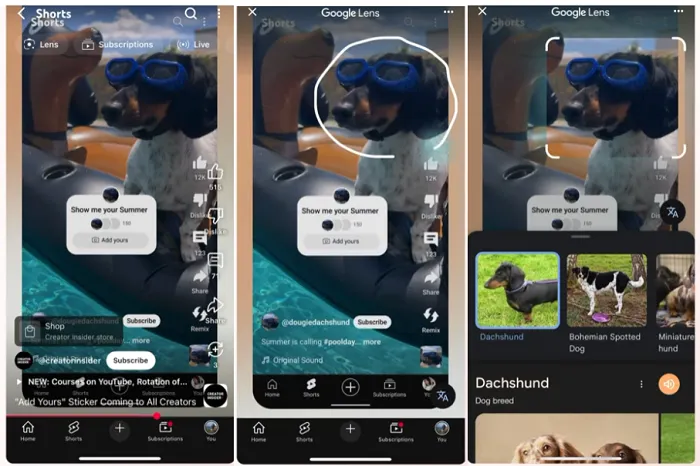Introducing YouTube Shorts Lens Search: A New Visual Discovery Tool
In an innovative move, YouTube is currently testing a groundbreaking feature that empowers Shorts viewers to explore content visually. This new functionality leverages Google’s Lens technology, allowing users to scan Shorts videos for objects, people, and even translate languages directly within the clip. This development aims to enhance user engagement by providing a seamless way to interact with video content through visual recognition.
How the Shorts Lens Search Works
During this experimental phase, viewers will have the ability to pause a Shorts video and activate Google Lens. This enables them to select specific elements within the clip-such as a product, landmark, or scene-and initiate a visual search. The process is designed to be intuitive, integrating smoothly into the viewing experience. For example, if a user watches a Short filmed at a famous monument, they can tap to identify the landmark and access detailed information about its history and significance.

Potential Applications and Use Cases
This feature opens up numerous possibilities for content discovery and interaction. For instance, viewers might identify a fashion item worn by a creator and find similar products online, or learn more about a location featured in a video. YouTube suggests that this could be particularly useful for educational content, travel vlogs, or shopping-related videos, where quick access to supplementary information enhances the viewer experience.
While the initial focus isn’t on product matching or e-commerce integration, the potential for future expansion is significant. The ability to recognize items and provide related links could revolutionize how viewers shop and interact with content, creating a more immersive and personalized experience.
Limitations and Privacy Considerations
It’s important to note that this new Lens search feature will not be available for Shorts that include affiliate links or paid product promotions tagged through YouTube’s shopping features. This indicates that the current rollout is primarily aimed at enhancing organic content discovery rather than commercial transactions.
Additionally, YouTube emphasizes that the technology does not utilize biometric facial recognition. While it can identify public figures when relevant, it does not track or analyze individual faces for personal identification, addressing privacy concerns associated with facial recognition tools.
Furthermore, AI-generated summaries and overviews may be displayed within Shorts Lens results, providing users with quick contextual information about the identified objects or scenes.
Implications for Content Creators and Brands
This new feature could significantly impact influencer marketing strategies. Brands might collaborate with creators to showcase their products, encouraging viewers to use Lens to find matching items or similar products. For example, a fashion brand could pay an influencer to wear their clothing, prompting viewers to scan the outfit for purchase options.
However, this also raises concerns about authenticity, as the ease of identifying and matching products could lead to counterfeit or misleading representations. Nonetheless, for niche or specialized merchandise, Lens search offers a promising avenue for targeted marketing and consumer engagement.
Potential Risks and Ethical Considerations
While the technology offers exciting opportunities, it also presents risks such as misuse for stalking or unauthorized tracking of individuals based on their appearance in videos. YouTube clarifies that the Lens feature does not employ biometric facial recognition, which helps mitigate some privacy issues. Still, the ability to identify public figures or individuals in videos could be exploited if not carefully regulated.
As the feature rolls out globally, ongoing oversight and transparent policies will be essential to balance innovation with user privacy and safety.
Availability and Future Outlook
Starting this week, YouTube is making the Shorts Lens search functionality accessible to all viewers. This marks a significant step toward more interactive and visually driven content exploration on the platform. As the technology matures, we can expect further enhancements, including broader integration with shopping, social discovery, and personalized content recommendations.

